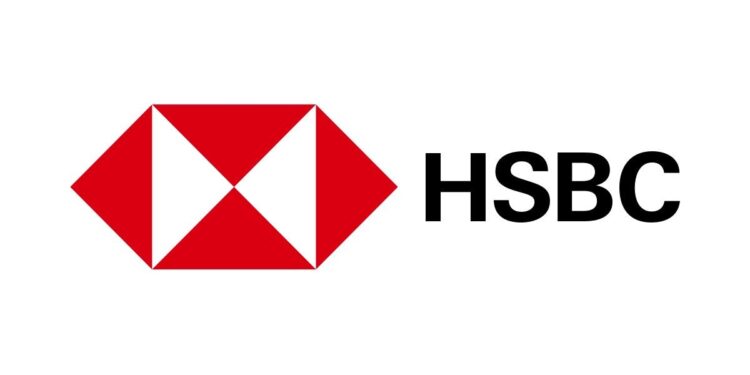HSBC, Europe’s largest bank by assets, faces an uncertain future following the unexpected departure of its chairperson. The exit of the bank’s top executive has sparked concerns over a leadership vacuum at a critical juncture for the global banking giant. As HSBC navigates a challenging economic landscape and intensifying regulatory scrutiny, industry experts and investors alike are closely watching how the institution will address the gap at its helm. This development raises urgent questions about the bank’s strategic direction and governance at a time when stable leadership is paramount.
HSBC Chair’s Departure Triggers Uncertainty Amid Strategic Overhaul
The unexpected resignation of HSBC’s chair has thrown Europe’s largest bank into a period of strategic uncertainty. Industry analysts warn that the departure comes at a critical juncture as the bank navigates an ambitious restructuring plan aimed at streamlining operations and boosting profitability. The leadership vacuum raises questions about the continuity of governance and whether HSBC can maintain investor confidence amid mounting geopolitical and economic pressures.
Key challenges now facing HSBC include:
- Securing a capable successor: The selection process could be lengthy, risking further instability.
- Balancing strategic priorities: Maintaining momentum on cost-cutting while responding to market demands.
- Addressing stakeholder concerns: Reassuring investors and clients during the transition.
| Priority Area | Impact | Timeframe |
|---|---|---|
| Leadership Appointment | High | 3-6 months |
| Strategic Plan Execution | Medium | Ongoing |
| Market Confidence | High | Immediate |
Implications for Europe’s Banking Sector and Investor Confidence
The sudden departure of HSBC’s chair has sent ripples across Europe’s banking landscape, intensifying concerns about governance stability in one of the continent’s largest financial institutions. Investors are closely watching how the leadership void will be addressed, given the critical role HSBC plays in cross-border financing and international trade. Market analysts warn that prolonged uncertainty could undermine investor confidence, especially as European banks navigate a complex environment marked by regulatory scrutiny, digital transformation, and lingering economic pressures from geopolitical tensions.
Key areas under the microscope include:
- Strategic continuity: Whether HSBC’s board can swiftly appoint a successor capable of steering the bank through evolving market challenges.
- Stock volatility: Heightened risk of share price fluctuations amid questions over the bank’s future direction.
- Regulatory response: Potential intensification of supervisory oversight as regulators emphasize leadership robustness in safeguarding financial stability.
| Impact Area | Potential Consequence | Timeframe |
|---|---|---|
| Investor Sentiment | Increased cautiousness, possible sell-offs | Short-term |
| Corporate Governance | Board restructuring, leadership search | Medium-term |
| Regulatory Scrutiny | Heightened oversight, additional compliance measures | Ongoing |
How quickly and decisively HSBC can fill the leadership gap will be pivotal in restoring stability and reassuring both the market and European regulators that the bank can maintain its role as a pillar of the financial system.
Expert Recommendations for Navigating Leadership Transition at HSBC
In the wake of the sudden departure, HSBC’s board is urged to act decisively to mitigate the risks associated with a prolonged leadership vacuum. Experts emphasize the importance of appointing an interim chairperson who commands respect both internally and externally to maintain stakeholder confidence. Internal communications should be transparent and frequent to reassure employees and investors alike, while the bank reassesses its strategic priorities to maintain momentum amid uncertainty.
Leadership specialists also recommend leveraging a structured transition plan focusing on key areas:
- Succession clarity: Identifying a clear and qualified successor or interim leader to minimize operational disruptions.
- Stakeholder engagement: Proactive dialogues with shareholders, regulators, and market analysts to sustain trust.
- Strategic continuity: Ensuring that ongoing transformation initiatives and compliance mandates remain prioritized.
- Risk management: Close monitoring of market reactions to the leadership gap, adjusting response strategies accordingly.
| Recommendation | Expected Impact | ||
|---|---|---|---|
| Interim Chair Appointment | Stabilizes leadership, reassures markets | ||
| Transparent Stakeholder Communication | Builds trust, minimizes speculation | ||
| Maintaining Strategic Initiatives | Prevents disruption of growth plans | ||
| Proactive Risk Monitoring | | Recommendation | Expected Impact | |
| Interim Chair Appointment | Stabilizes leadership, reassures markets | ||
| Transparent Stakeholder Communication | Builds trust, minimizes speculation | ||
| Maintaining Strategic Initiatives | Prevents disruption of growth plans | ||
| Proactive Risk Monitoring | Enables timely responses to market changes |
Future Outlook
As HSBC faces the departure of its chair amid ongoing strategic challenges, the search for new leadership takes on added urgency. With Europe’s largest bank navigating a complex global landscape, industry watchers will be closely monitoring the steps taken to fill the leadership void and steer the institution’s future direction. The coming months will be critical in determining how HSBC addresses both internal governance and external market pressures in the wake of this high-profile exit.
















